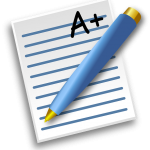Fishbone Diagram Instructions:
- Consider factors contributing to the problem: Think about the individual (s), the system, and a combination of factors. Use this to fill in the fishbone diagram.
- Develop the causes by asking “Why?” until you have reached a useful level of detail that is, when the cause is specific enough to be able to test a change and measure its effects.
- Write the effect you wish to influence in a box on the right-hand side of the page.
- Draw a horizontal line across the page to the left, starting at the box you drew.
- Decide on at least six categories of causes for the effect. The standard categories in a classic cause and effect diagram are:
- Materials (unavailable, expired, incorrect)
- Methods (how the methods in place are affecting the outcome)
- Equipment (design, availability, and maintenance)
- Environment (staffing levels &skills, administrative & managerial support, physical space)
- People
- Draw diagonal lines above and below the horizontal line to create “fishbones” and label each line at the end with one of the categories you have chosen. Draw a box around each label.
- For each category, generate a list of the causes that contribute to the effect. List the causes by drawing “branch bones”. Identify a minimum of two items in each category.
- Write out the AIM statement to guide the causes and effects of the problem.
- Provide three or greater relevant scholarly articles/documents/websites cited according to APA format, 7th edition. Publication date within five years. Submit a separate page for the references.
EXAMPLE:
| Criteria | Exemplary (10 pts) | Proficient (8 pts) | Sufficient (7 pts) | Underdeveloped (5 pts) |
| Content & Development | Clearly states the problem and several factors contributing to problem. | Clearly states the problem and factors contributing to problem. | Partially states the problem and factors contributing to problem. | Does not state the problem or factors contributing to problem. |
| Categories | Includes at least two items in at least six categories (i.e., People, Processes, etc.). | Includes at least one item in at least five categories (i.e., People, Processes, etc.). | Includes three to four categories. | Includes less than three categories. |
| Organization | Diagram is organized, logical, and easy to follow. | Diagram is organized and easy to follow. | Diagram is unorganized and difficult to follow. | Diagram is incomplete. |
| Grammar, Punctuation, & Spelling | Rules of grammar, usage, and punctuation are followed; 1-2 spelling errors. | Rules of grammar, usage, and punctuation are followed with few errors; 3-4 spelling errors. | Rules of grammar, usage, and punctuation are followed with minor errors; 5-6 spelling errors. | Paper contains major grammatical, usage, punctuation errors; greater than 6 spelling errors. |
| References | Three or greater relevant scholarly articles/documents/websites are cited according to APA format, 7th edition. Publication date within five years. | Only two relevant scholarly articles/documents/websites are cited according to APA format, 7th edition. Publication date within five years. | Less than two relevant scholarly articles/documents/websites are cited according to APA format, 7th edition. Publication date greater than five years. | No references or references not in APA format, 7th edition. |
Capstone Project Assignment #2


